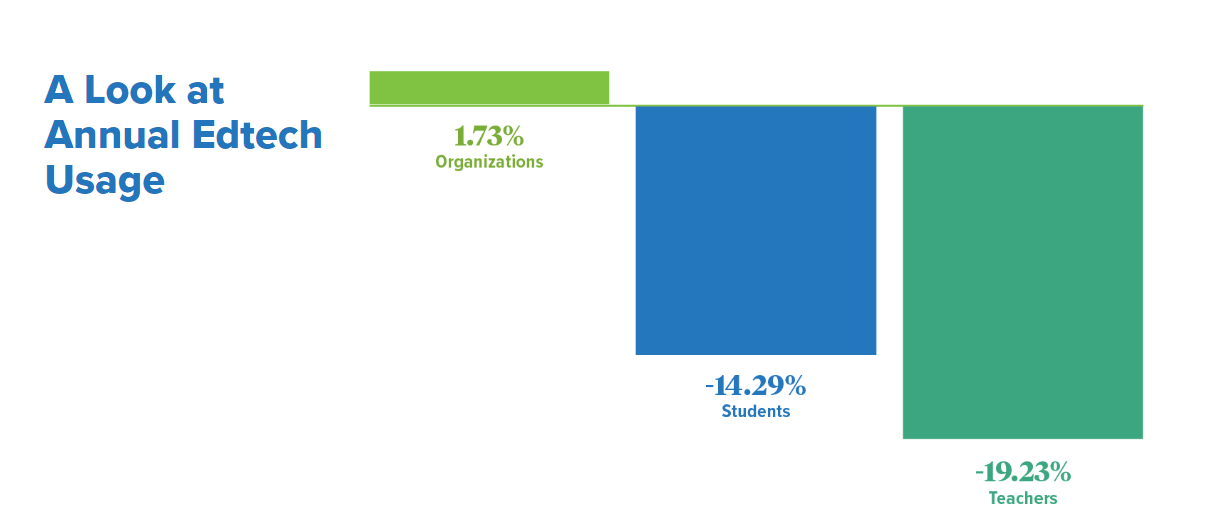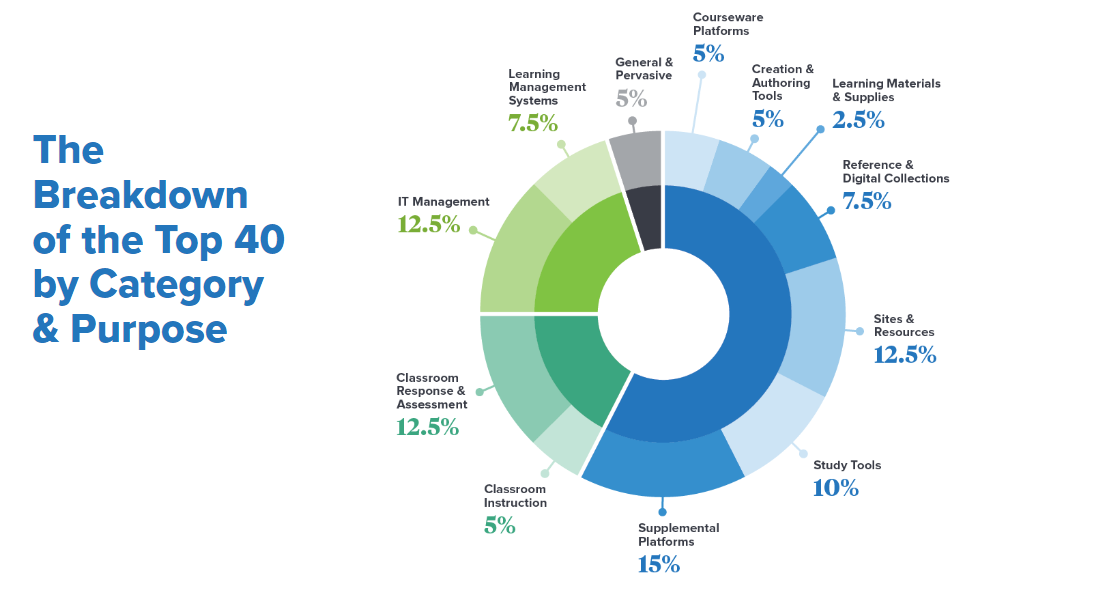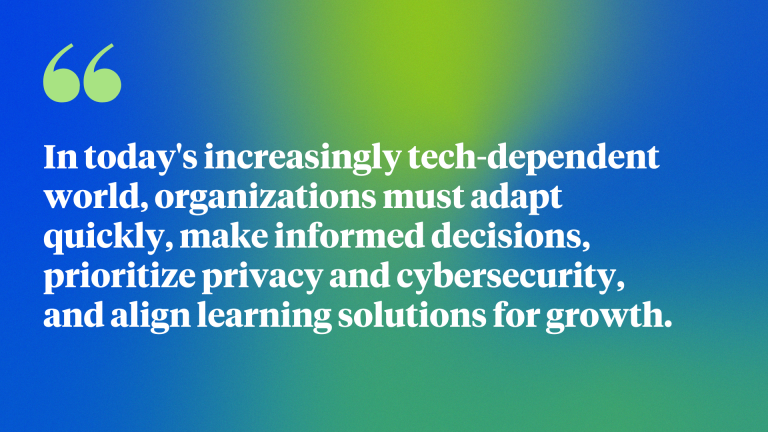It’s no secret that educational technology has become integral to teaching and learning—both in and out of the K-12 classroom—and administrators, educators, and students alike continue to access and rely on a wide range of edtech tools that enhance the learning process. Technology is everywhere these days, but just using it for the sake of it won't cut it.
Our latest EdTech Top 40 Report shares the latest on the use of digital solutions, tools, and resources in K-12 districts across the country during the 2022-2023 school year. It also provides insights on trends and categorical rankings. Here are some highlights:
- 42: The average number of edtech tools accessed by an individual student and an individual teacher.
- 2,591: The average number of edtech tools accessed annually per school district.
- In the 2022-23 school year, 58% of tools accessed were learner-focused.
The report shows that K-12 schools use about 1.7% more tools each year than the previous academic year. Also, data revealed that teachers and students are using fewer different digital tools this year. Teachers accessed about 20% fewer tools, while students used 14% fewer. This suggests that although people use fewer tools, schools must manage even more options than before. In the future, buying decisions and teaching practices will likely be influenced by evidence-based edtech and platforms.

In today's increasingly tech-dependent world, organizations must adapt quickly, make informed decisions, prioritize privacy and cybersecurity, and align learning solutions for growth. There is a need for continuous conversations between stakeholders across the K-12 landscape to support that work.
Good Decisions Need Good Data
Technology today is crucial, but using it without purpose isn't sufficient. District leaders must intentionally define goals for their edtech tools, set evaluation criteria, and establish clear implementation methods. Decisions supported by staff input, data, and reputable research yield the best outcomes.
ESSA-aligned research is a critical and now required component of evidence-based decision-making. Leaders must assess research quality, quantity, and context. ESSA guides effective tech use with research-backed interventions, ensuring funds are well-utilized. Edtech choices require ongoing evidence, especially as federal funds dwindle. Continuous evaluation and alignment with goals are essential. District leaders must prioritize ESSA-aligned studies, create a central edtech repository, and collaborate with research-oriented providers.
Privacy and Cybersecurity are Paramount
As we spend more time online, the amount of information shared grows exponentially. This trend is mirrored within educational contexts like districts, schools, and classrooms, raising concerns about privacy and security. Federal legislation like the Family Educational Rights and Privacy Act (FERPA), the Protection of Pupil Rights Amendment (PPRA), and the Children's Online Privacy Protection Act (COPPA) ensures parental rights over their children's digital information.
Several states, such as California, Minnesota, and Illinois, have passed laws addressing student data security and privacy. Concurrently, local educational entities are independently crafting policies to manage student data privacy. The aim is to safeguard students and educators against misuse of personal information and to shield institutions from the repercussions of data breaches. To meet compliance, measures like maintaining Data Privacy Agreements (DPAs) with edtech providers and designating a 'Chief Privacy Officer' within districts are becoming essential. Prioritizing data protection, robust cybersecurity measures, and building trust preserve reputation and customer loyalty.
Align Learning for Growth
Identifying learning needs, customizing solutions, fostering a learning culture, and evaluating effectiveness drive organizational growth. Effective edtech evaluation goes beyond technology itself, encompassing holistic processes that consider equity, accessibility, and evolving district needs. Clear outcomes for each tool guide stakeholders and assessment criteria. Key evaluators include teachers, curriculum leaders, assessment experts, and IT professionals, as appropriate.
The EdTech Top 40
The EdTech Top 40 represents the edtech solutions accessed by most students and educators throughout the 2022-23 school year, demonstrating how many edtech tools are used on average in districts every month and what things look like at the individual student and teacher levels. Hint: it’s still a lot of edtech.
In addition to highlighting the top 40 education technology products with more than 4.1 million student and teacher interactions, the report provides insights on trends and rankings within key categories. This year's categories include:
- Classroom Response and Assessment
- Courseware Platforms Learning Management Systems
- Supplemental Platforms
- Study Tools
- Resources and Digital Collections

It’s undeniable that technology is shaping the future of education. Learn more about our perspective and considerations for the K-12 community by accessing the full EdTech Top 40 report.
Related Content
 inst-3step.jpg
inst-3step.jpgBlogs
 digging_deep_into_2025s_learning_trends_the_state_of_higher_education_in_anz_-_thumbnail_1.png
digging_deep_into_2025s_learning_trends_the_state_of_higher_education_in_anz_-_thumbnail_1.pngBlogs
 13lmsfeaturesthatbenefitstudentlearning.jpg
13lmsfeaturesthatbenefitstudentlearning.jpgBlogs

